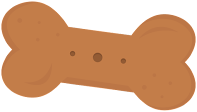This resource is included in the Pets Unit for Elementary ELL- Starters and it is ALSO available as an individual resource here:
LINK: https://www.teacherspayteachers.com/Product/The-dog-and-the-Prepositions-for-Elementary-ELL-11385429
Teaching the Prepositions of location are essential in
constructing longer sentences to express the relationship between objects and
the pets, in this case I focused on the dogs. Proficiency in
prepositions facilitates language development.
Start by printing your dog and the prepositions flashcards to provide
clarity to describe spatial relationship with precision using the dog as the
center of the activity.
Teacher: The dog is on the bed.
There is a set of cutouts in color and b/w to aid the comprehension of the
prepositions. They work well for listening and speaking activities. Have your
set ready and the students will create their own by coloring the cutouts and
adding an opened clip behind each cutout to have them stand.
Learners will understand instructions and use the cutouts to physically
show what was said.
Teacher: The dog is next to the doghouse.
Students can give directions for the class to perform.
Print the quilt mats, it comes with the pictures only and the
words only, use it either way. This is my example. I used the picture quilt and
cut all the words to do the match. Students will place the preposition word on
each picture and say the sentence: The dog is between the dohouse and the ball.
Or use the quilts as cards to match and check the understanding of the new language.
Use the picture cards to play with the puzzle
templates. This game will help your students understand the sentence structure,
word order and the grammatical rule for the use of prepostions.
A
few worksheets to practice writing and understanding sentences
with prepositions. Students will show that they are able to comprehend the
prepositions effectively.
This is a reading comprehension worksheet that can be easily assigned as independent tasks, promoting self-directed learning to reinforce their reading skills
The worksheets
can be used as a review for the students to check the understanding of the
prepositions and for you to identify if the learner needs more support.
I
do have another blog for Kindergarten English Language Learners with more resources
for the pet unit. Click here: www.eflpreschoolteachers.blogspot.com

















































